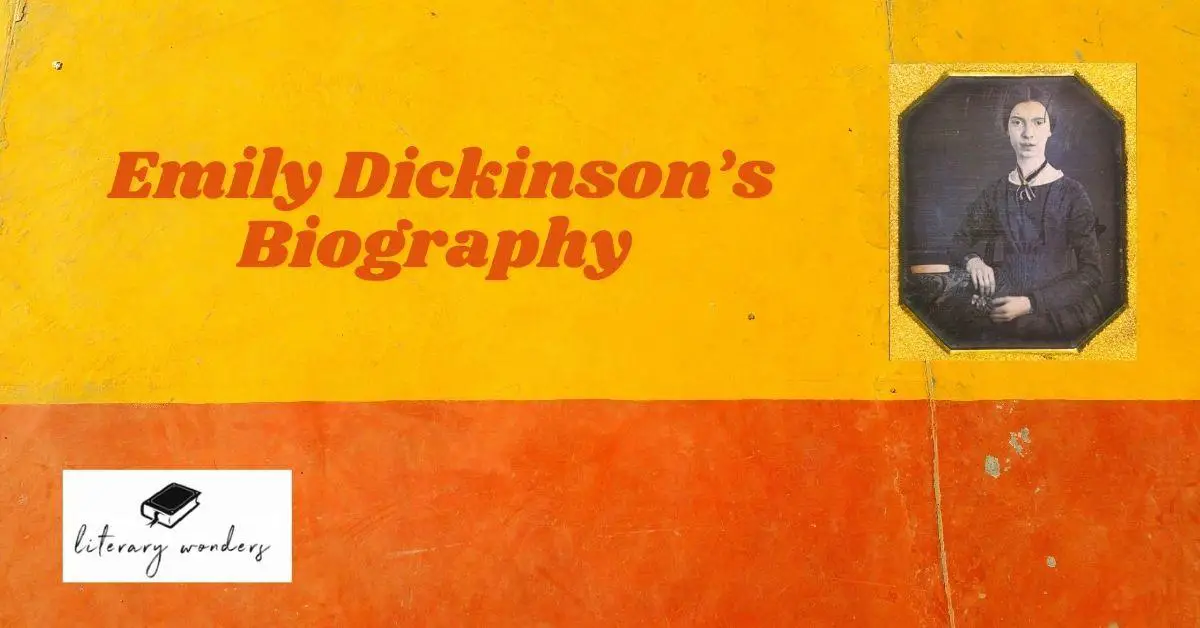Early Life and Education
Emily Dickenson, a great American author, wrote many unparalleled poetic pieces. She was born in Massachusetts on December 30th in 1830 to Edward Dickenson and Emily Norcross Dickinson. Her skillful father was a member of Congress as well as a flourishing lawyer of his time, while her mother was a decent homemaker. Emily shared a literary family stratum; her grandfather founded Amherst College, where her father even rendered his services for years. She, along with her siblings started education at a primary school, located in Amherst. After graduating from Amherst Academy, she entered Mount Holyoke Female Seminary. Unfortunately, her unstable health never allowed her to complete her studies.
Secretive Life and Death of Emily Dickenson
Emily Dickenson led a highly mysterious life. After leaving her studies due to unsettling health issues, she separated, and devoted herself to reading and writing. Being emotionally disturbed, she preferred transferring her sacred ideas on pieces of paper that were known to the world after her death. After facing acute illness, she said GoodBye to the world at the age of fifty on the 5th of May in 1886.
Some Striking Facts about Emily Dickenson
Some of the notable facts about Emily Dickenson are as follows.
- She kept most of her literary efforts to herself, only a handful of poems appeared during her lifetime.
- She became an anti-social person during the later years of her life and used to communicate with others via letters.
- Her place, Samuel Dickinson, which was built in the 19th century was turned into a museum in 2003.
Emily Dickenson’s Career and Style of Writing
Although the infirmity confined her almost entirely to her room in the last fifteen years of her life, she never gave up her passion for writing. The writings of John Keats, Robert Browning, Elizabeth Barrette Browning, and Benjamin Franklin Newton influenced her. These writers further aided her writing passion by giving her a book of poetry. Emily used to post her work regularly to her friends; she remained infamous during her lifetime.
However, after her death, her family made sincere efforts to win glory for Emily Dickenson; they found forty hand-bound volumes of nearly 1,800 poems upon her death encompassing her unique writing style and pensive ideas that are relatable to the world even today. Her manuscripts show a series of dash-like marks in her poems. However, the initial annotation and recurring dashes were replaced with en-dashes upon publication.
Emily Dickenson’s Famous Works
Some of her best poems include
- “Because I Could Not Stop For Death”
- “I Heard a Fly Buzz When I Died”
- “Success is Counted Sweetest”
- “Hope is the Thing with Feathers.”
- “My Life had stood – a Loaded Gun”
- I am Nobody! Who are You?
- Note: If you want to read her complete poems, please visit:
- Complete Poems: Emily Dickinson (Faber poetry) Paperback – 3 Nov. 2016
- The Complete Poems of Emily Dickinson Paperback – 30 Jan. 1976
Her significant Impact on the World
During the 18th century, Emily Dickenson became an eccentric for being a female in that time with striking writing capabilities. Many of her literary pieces dealt with immortality, family and societal constraints, and death. Her powerful poetry that seems an exhibition of a slant rhyme scheme has inspired a generation of female writers to break the stereotypical writing boundaries both personally and creatively.
The reason why her poems become part of various institutions is that they are rhythmic, alive, and surprising. She appreciated the beauty of the language in her poems, and her choice of words exhibits the nuance and complexity of placing the right words in a way that elevated her writing.
Emily Dickenson’s Famous Quotes
See Also:
I died for Beauty but was Scarce by Emily Dickinson Analysis

